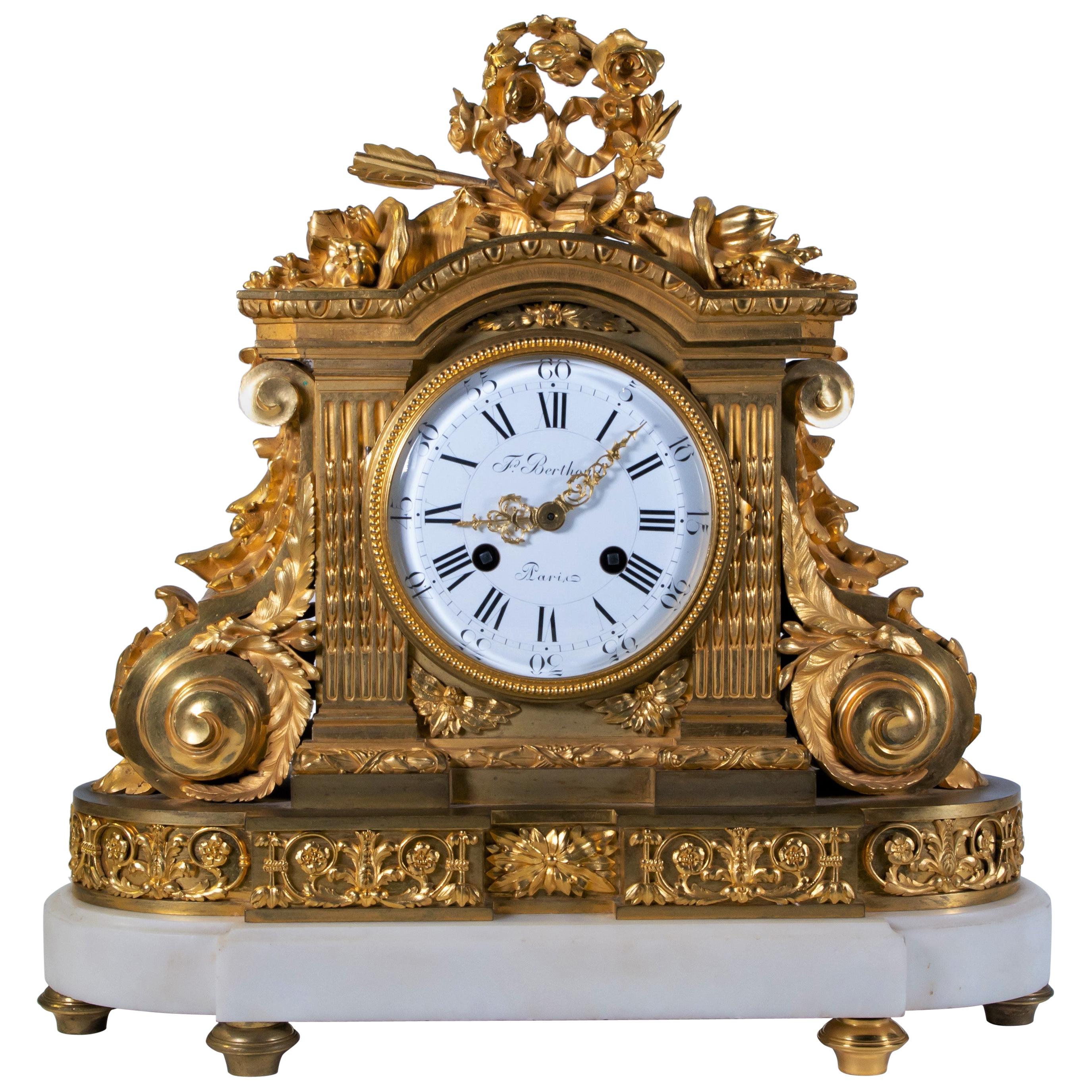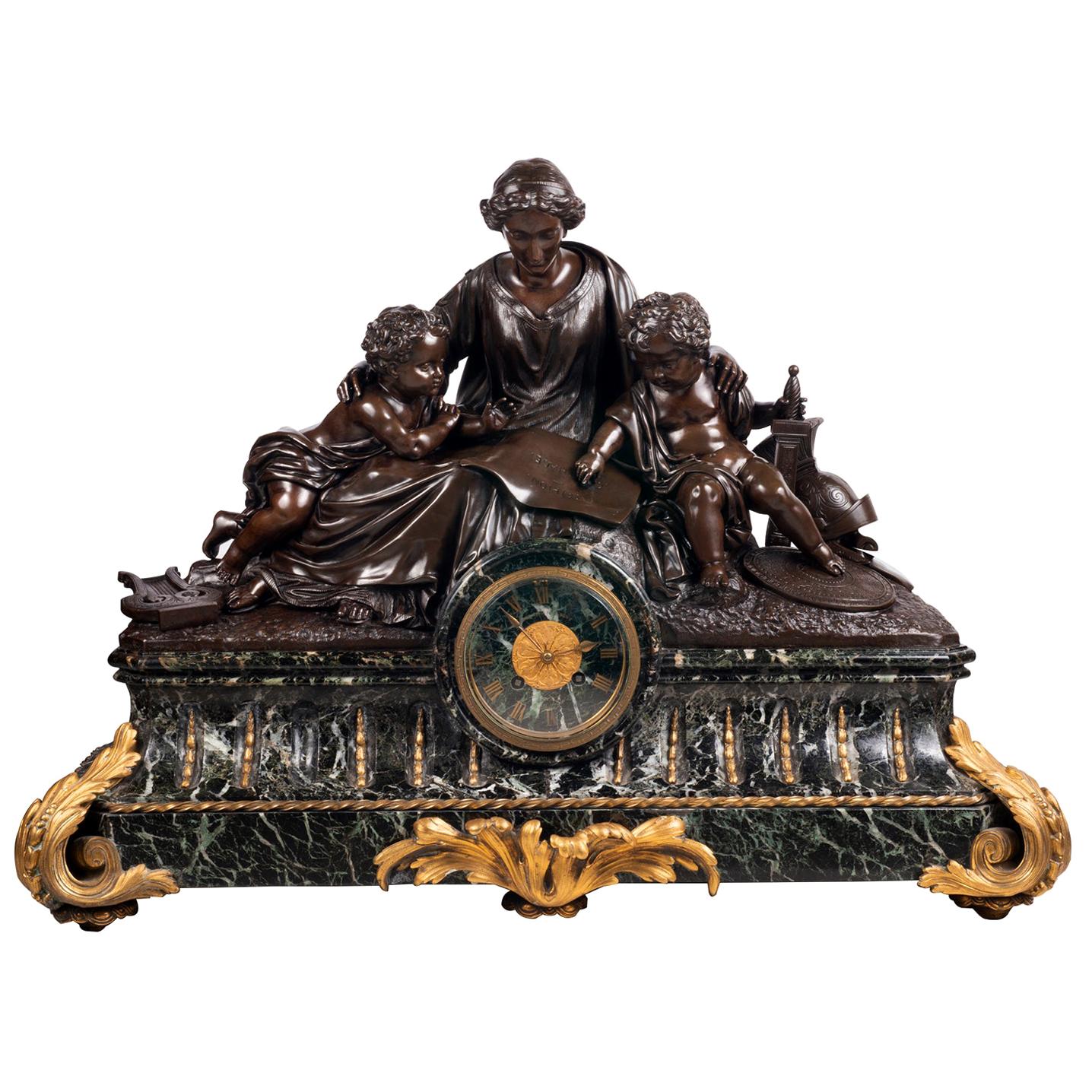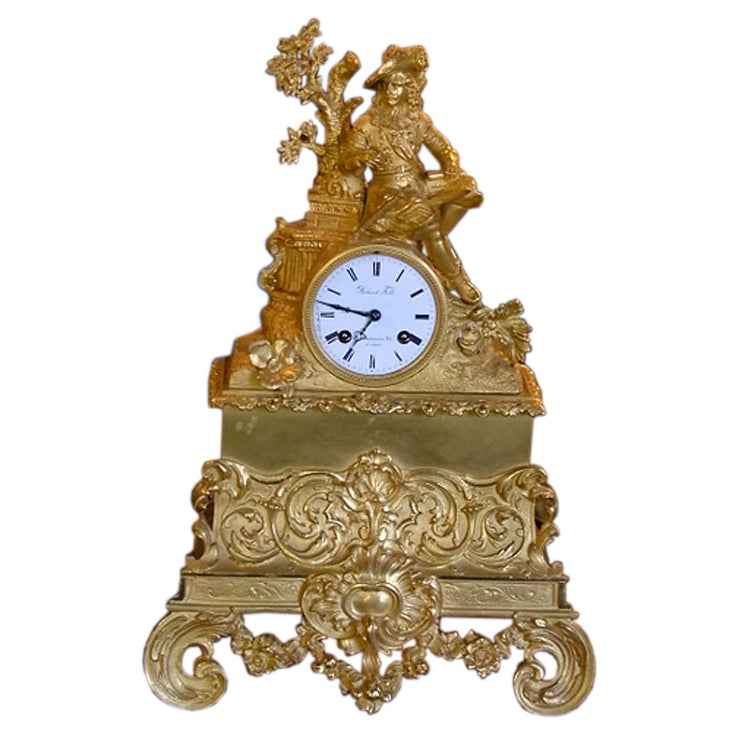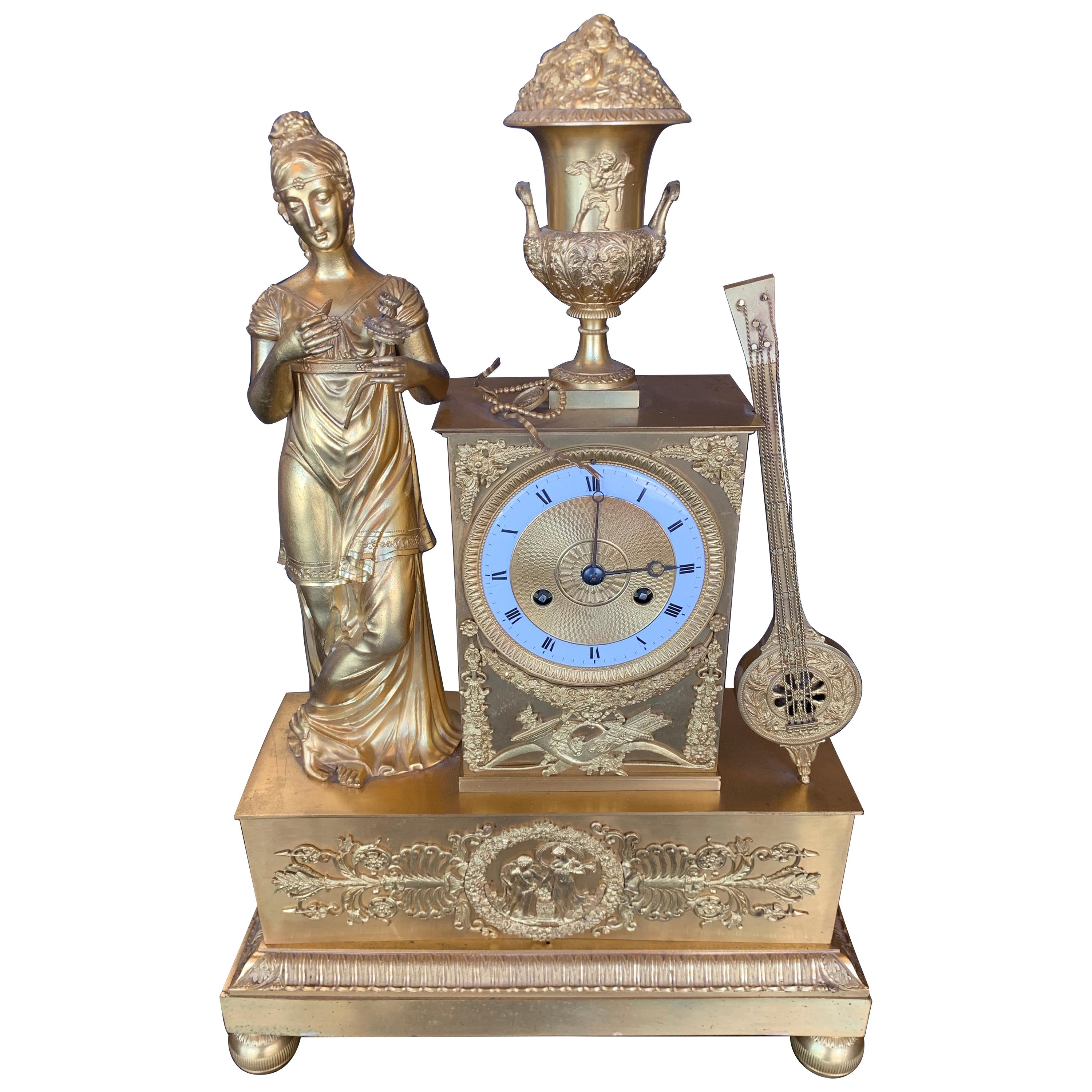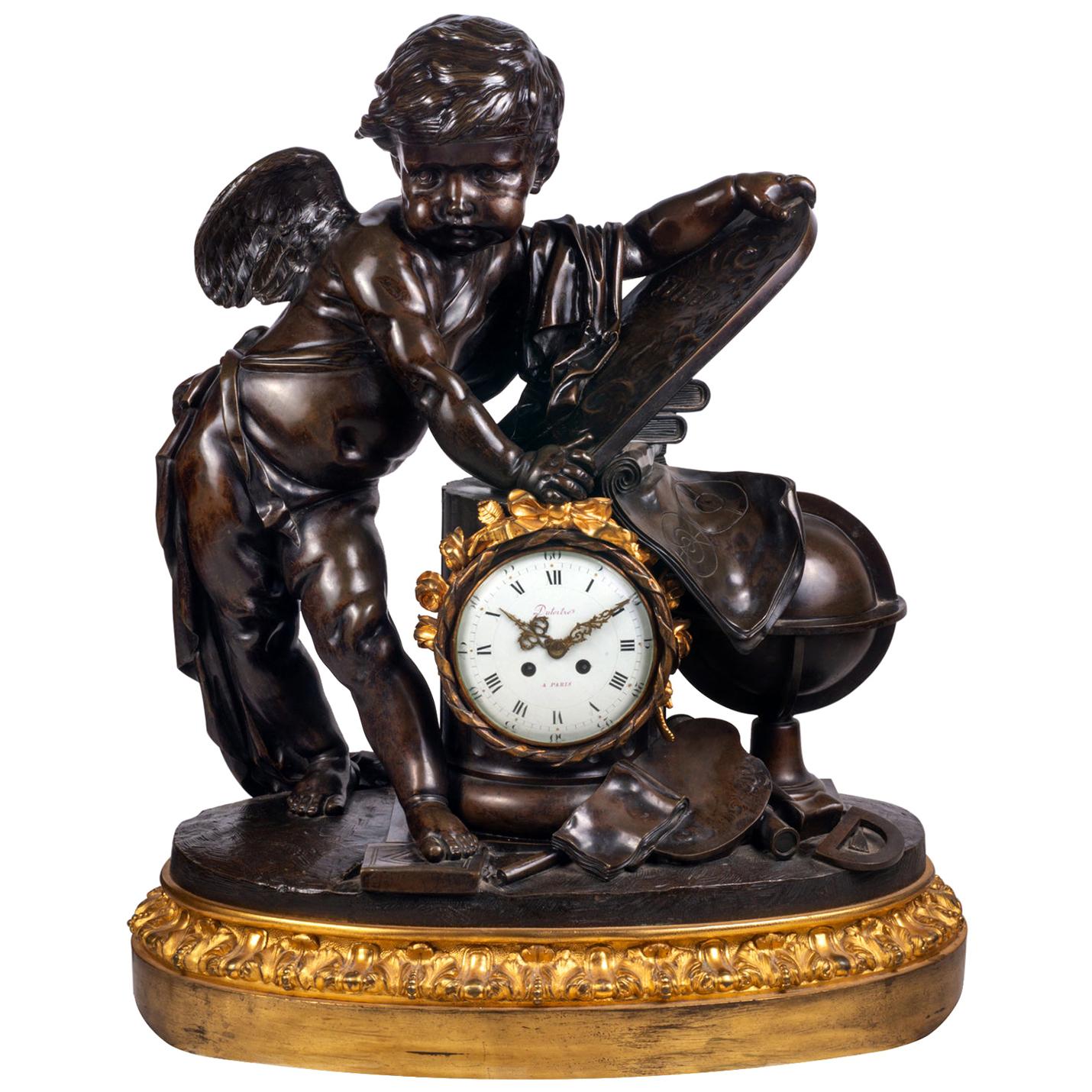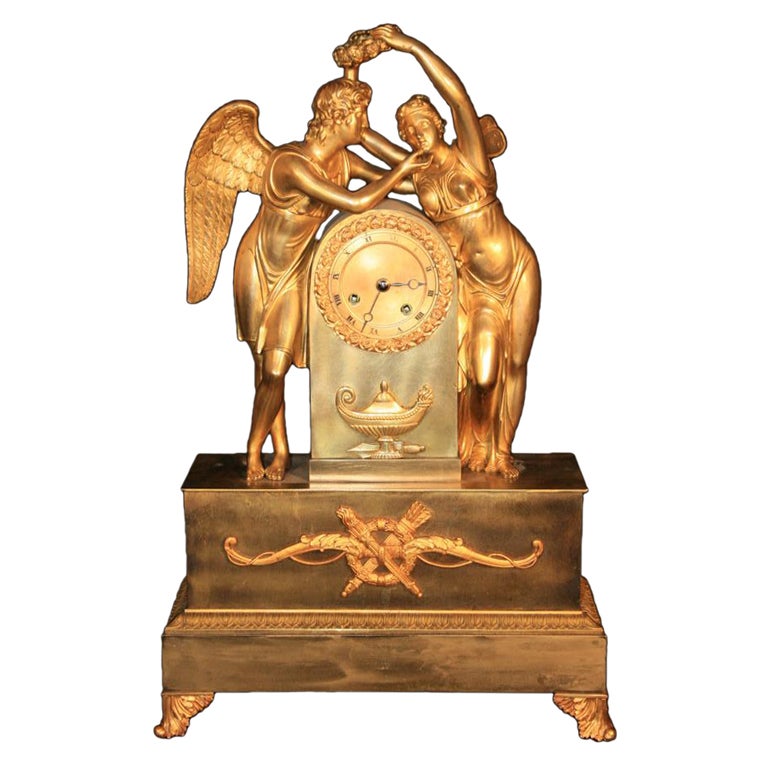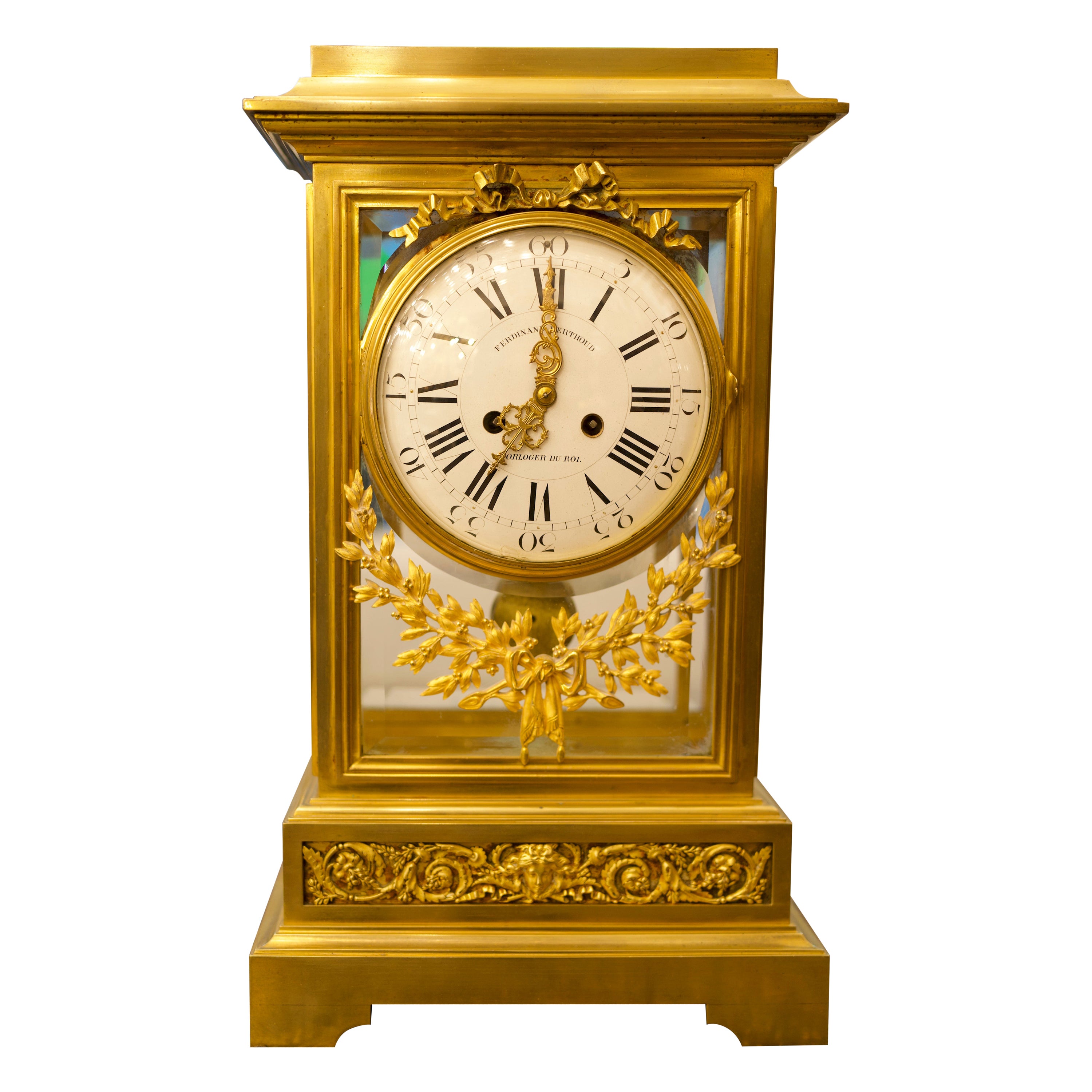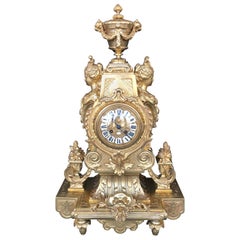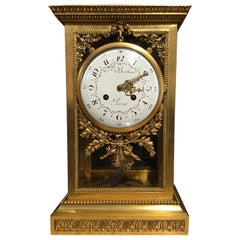
Bronze Dore Mantel Clock, 19th Century by F. Berthoud with Open Escapement
View Similar Items
Want more images or videos?
Request additional images or videos from the seller
1 of 8
Bronze Dore Mantel Clock, 19th Century by F. Berthoud with Open Escapement
About the Item
- Dimensions:Height: 17 in (43.18 cm)Width: 10.5 in (26.67 cm)Depth: 6.75 in (17.15 cm)
- Materials and Techniques:
- Place of Origin:
- Period:
- Date of Manufacture:1890
- Condition:Wear consistent with age and use.
- Seller Location:Houston, TX
- Reference Number:1stDibs: LU1378215316372

About the Seller
4.9
Vetted Seller
These experienced sellers undergo a comprehensive evaluation by our team of in-house experts.
Established in 1968
1stDibs seller since 2015
246 sales on 1stDibs
Typical response time: 1 hour
More From This SellerView All
- Bronze Doré and Rouge Marble Clock Garniture Set by Ferdinand BerthoudLocated in Houston, TXExceptional bronze doré and rouge griotte marble clock and candelabrum set by Ferdinand Berthoud. Signed “Fd Berthoud/Paris on the face. 19th century, good working condition and has...Category
Antique 1880s French Mantel Clocks
MaterialsBronze
- French 19th Century Three-Piece Bronze Dore Garniture Clock SetLocated in Houston, TXElegant three-piece bronze doré garniture set Finely chased bronze with original gilding Fine detail work.Category
Antique Mid-19th Century French Mantel Clocks
MaterialsBronze
- French 19th Century Three-Piece Bronze Doré Garniture Clock SetLocated in Houston, TXElegant three-piece bronze doré garniture set Finely chased bronze with original gilding Fine detail work.Category
Antique Mid-19th Century French Mantel Clocks
MaterialsBronze
- French Bronze Dore Mantel Clock with Cherubs, Sevres Style MountsLocated in Houston, TXBronze gilt French mantel clock with Sevres style porcelain painted with cherubs. A centered urn At the crest with floral and foliate design. A petite bird centered at the top. Two ...Category
Antique Late 19th Century French Mantel Clocks
MaterialsBronze
- French Bronze Cartel Clock, 19th CenturyLocated in Houston, TXLarge cartel clock in bronze with a patinated putto that sits at the crest of this exceptional clock. Flourishes and foliate designs grace the sides of the circular clock...Category
Antique Late 19th Century French Wall Clocks
MaterialsBronze
- French Bronze Cartel Clock, 19th CenturyLocated in Houston, TXLarge cartel clock in bronze with a patinated putto that sits at the crest of this exceptional clock. A rooster is encased below the face depicting the beginning of a new day. Flou...Category
Antique Late 19th Century French Wall Clocks
MaterialsBronze
You May Also Like
- Large 19th Century French Doré Bronze Mantel ClockLocated in Los Angeles, CAFrench 19th century doré bronze mantel clock.Category
Antique 19th Century French Mantel Clocks
MaterialsBronze
- Mantel Clock 19th Century Styl Empire by Ferdinand Berthoud À ParisLocated in Warsaw, PLOrmolu bronze mantel clock flanked by a troubadour and musical instruments, signed 'Ferdinand Berthoud a Paris'. The end of the 18th and beginning of the 19th century was a crucial time in which new technological advances helped to make watches more accurate and more portable. During the 1790s, the production of gilded bronze increased considerably as working conditions improved. The freedom of trade initiated by the French Revolution allowed many casters to develop large factories. The new factory environment gave them a chance to execute all stages of bronze work including drawing, casting, gilding, assembly, and trade of art objects. While the bronzers took creative liberty in creating all kinds of clocks in contrast to the noble and rigorous structure carried by the movement of neoclassicism. Under the reign of Empire, the case designs started gradually to develop away from a proportionate and strict classicism towards a baroque style and revival style. The rediscovery of medieval civilization was one of the intellectual curiosities of the beginning of the 19th century, with much input from the Ancien Régime and its institutions, rites and the medieval churches in which family ceremonies occurred. This early nineteenth-century figural mantel clock is surmounted by a medieval musician. To be more precise, it is a french troubadour. Troubadours were known for composing and performing lyric poetry for the nobility back during medieval times. The clock is featuring a chiselled bronze troubadour, dressed in medieval fashion while holding a flute, playing a tune from sheet music called "Du Troubadour" that is resting on top of the rectangular clock case. In addition to that, the clock features a gilt bronze lute or vielle resting on a small stool on the opposite side of the clock’s case. The white enamel dial features the inscription Berthoud and is underlined by a bronze entourage chiselled with palmette motif, plus encompassed by c-scrolls and wreaths. The original hands are in blued steel and encircled by Roman numerals indicating hour next to Arabic numerals indicating minutes. The small details that adorn the hexagonal plinth are reliefs, depicting two water fountains or basins on both sides with a lyre in between. The sculpted image of a lyre raised above the background features also foliage garlands tied on top with ribbons. The clock rests on seven spinning feet. The clock was made in the well-known workshop of the Berthoud’s family that was recognized for their excellent work by the King. Berthoud Clockmakers History. Ferdinand Berthoud was a horologist and author of extensive treatises on timekeeping as well as a Swiss clockmaker serving the king of France, that produced many marine clocks, including a weight-driven version that inspired the first American sea-going clock. He was born in Plancemont, Switzerland, the son of an architect and judiciary. In 1741 he began a three-year apprenticeship as a clockmaker under his brother, Jean-Henri. He made his first marine chronometer in 1754 (sent for trial in 1761) and in 1764 was appointed a member of the Royal Society, London and Horloger Mécanicien de Sa Majesté et de la Marine ayant l'inspection de la construction des Horloges Marines. In 1769, Ferdinand Berthoud sent for his nephew Pierre-Louis Berthoud (1754–1813), commonly known as Louis Berthoud, a talented young watchmaker and clockmaker, inviting him to come to Paris from Couvet, Switzerland, to pursue his apprenticeship. Louis helped Ferdinand manufacture and repair the sea clocks...Category
Antique Late 18th Century French Louis XVI Mantel Clocks
MaterialsBronze
- Bronze Mantel Clock, 19th CenturyLocated in Madrid, ESTable clock. Marble and bronze, 19th century. Table clock with Paris box machinery made of marble and bronze and with porcelain plates applications with roc...Category
Antique 19th Century European Neoclassical Mantel Clocks
MaterialsBronze, Other
- 18th Century Carrara Marble and Dore Bronze Mantle Clock, F. BerthoudBy Ferdinand BerthoudLocated in New York, NYA fabulous and quite important 18th century Louis XVI period Carrara marble and dore bronze mantle clock, signed F. Berthoud, Paris. The body of the clock is exceptionally cast and f...Category
Antique 1780s French Louis XVI Mantel Clocks
MaterialsCarrara Marble, Bronze
- Large 19th Century Bronze Mantel ClockLocated in Brighton, SussexA large and impressive very good quality 19th century French Louis XVI style mantel (fireplace) clock, having a bronze mother and two children ...Category
Antique 19th Century French Louis XVI Mantel Clocks
MaterialsMarble, Bronze
- Exquisite Bronze Dore Richmond Fab Boule Montmartre Mantel Clock, 19th CenturyLocated in Savannah, GAExquisite Bronze dore Richmond Fab Boule Montmartre #17 mantel clock. Made in Paris, France. 19th CenturyCategory
Antique 19th Century French Clocks
MaterialsBronze
$2,995 Sale Price48% Off
Recently Viewed
View AllMore Ways To Browse
Pink And Gold Clock
Pink Antique Clock
French Dore Mantel Clock
Pink Mantel Clock
Pink French Mantel Clocks
Bronze Pink Clock
Deniere Bronze
By Deniere
Deniere A Paris
Open Escapement
Antique Pendulum Clock
Antique Pendulum Clocks
Antique Clock Pendulum Antique Clocks
Antique Clock Pendulum
Antique Clock Pendulums
Antique Clock Pendulum Clocks
Pendulum Antique Clock
Pendulum Clock Antique



